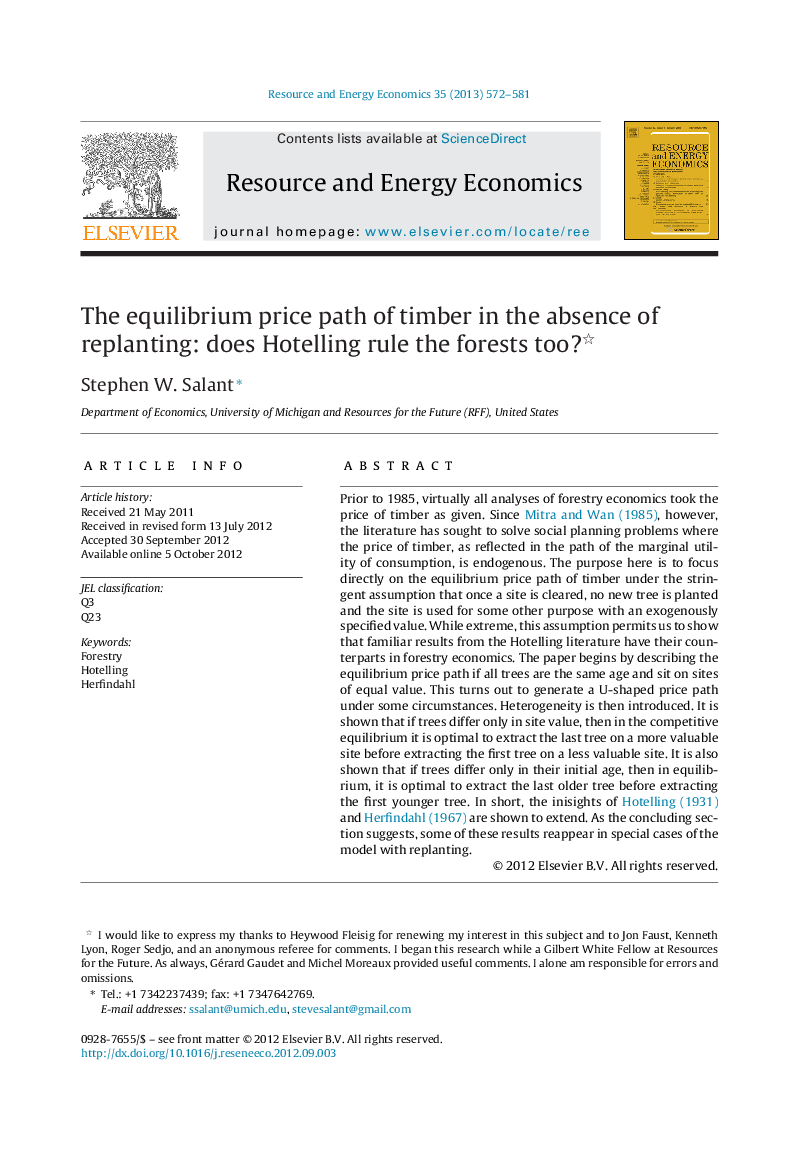| Article ID | Journal | Published Year | Pages | File Type |
|---|---|---|---|---|
| 985683 | Resource and Energy Economics | 2013 | 10 Pages |
Prior to 1985, virtually all analyses of forestry economics took the price of timber as given. Since Mitra and Wan (1985), however, the literature has sought to solve social planning problems where the price of timber, as reflected in the path of the marginal utility of consumption, is endogenous. The purpose here is to focus directly on the equilibrium price path of timber under the stringent assumption that once a site is cleared, no new tree is planted and the site is used for some other purpose with an exogenously specified value. While extreme, this assumption permits us to show that familiar results from the Hotelling literature have their counterparts in forestry economics. The paper begins by describing the equilibrium price path if all trees are the same age and sit on sites of equal value. This turns out to generate a U-shaped price path under some circumstances. Heterogeneity is then introduced. It is shown that if trees differ only in site value, then in the competitive equilibrium it is optimal to extract the last tree on a more valuable site before extracting the first tree on a less valuable site. It is also shown that if trees differ only in their initial age, then in equilibrium, it is optimal to extract the last older tree before extracting the first younger tree. In short, the inisights of Hotelling (1931) and Herfindahl (1967) are shown to extend. As the concluding section suggests, some of these results reappear in special cases of the model with replanting.
► This paper determines the price path of timber in a model without replanting. ► Trees differ from exhaustibles like oil because they grow at an age dependent rate. ► Connections are made to the forestry literature with replanting and to Hotelling.
